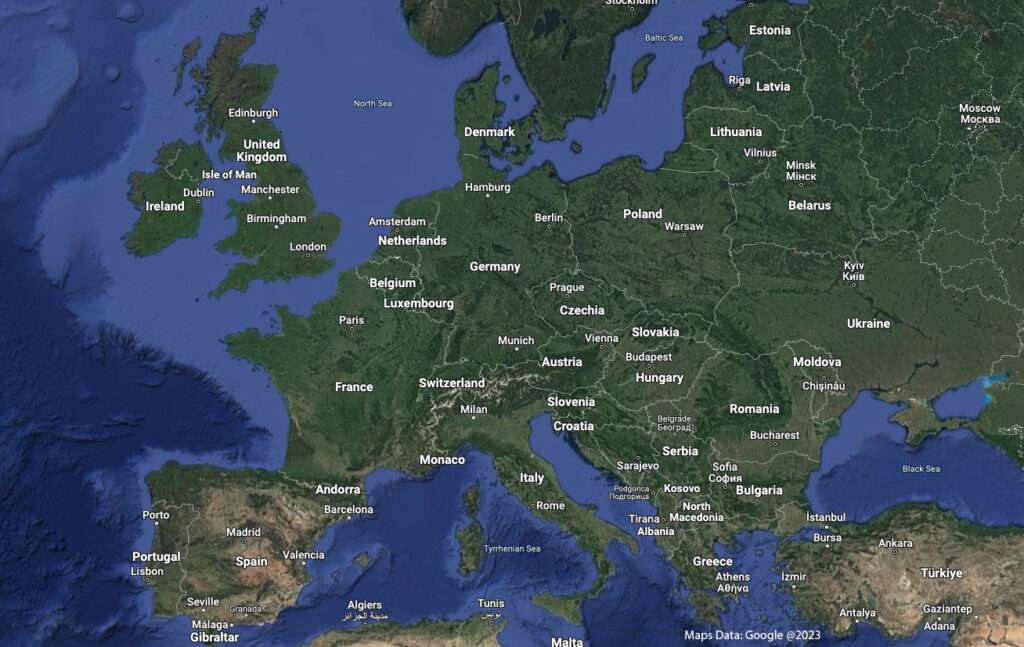Is Germany in eastern Europe?

In this blog article, we will explore the question of whether Germany is in eastern Europe. We will discuss the geographical location of Germany, the history of the region, and the cultural differences between Germany and other countries in eastern Europe.
Is Germany in eastern Europe?
Many people often ask whether Germany is in eastern Europe. The answer is that Germany is not generally considered part of eastern Europe. Geographically, Germany is located in the central part of Europe, bordered by Denmark to the north, Poland and the Czech Republic to the east, Austria and Switzerland to the south, and France, Luxembourg, Belgium, and the Netherlands to the west.
While Germany shares a border with several eastern European countries, it is important to note that the historical and cultural differences between Germany and those countries are significant. Historically, Germany has been a Western European country, with ties to France, Britain, and other western European nations. On the other hand, many eastern European countries have a history of being part of the Soviet Union or the Eastern Bloc during the Cold War era.
Culturally, there are also differences between Germany and other countries in eastern Europe. For example, Germany has a strong tradition of Protestantism, while many eastern European countries are predominantly Catholic or Orthodox. Additionally, German cuisine, language, and customs differ significantly from those of other countries in eastern Europe.
Despite these differences, Germany does have close ties with many eastern European countries, particularly in the areas of trade, politics, and security. Germany is a member of the European Union, which includes many countries in eastern Europe, and has close economic ties with countries such as Poland and the Czech Republic.
While Germany is not considered part of eastern Europe, it does have close ties with many countries in the region. The historical and cultural differences between Germany and eastern European countries are significant, but the ties between them are important for the continued prosperity and stability of the region as a whole.
Is Germany in East or West Europe?
Germany is located in Central Europe, between Eastern and Western Europe. The country is bordered by Denmark to the north, Poland and the Czech Republic to the east, Austria and Switzerland to the south, and France, Luxembourg, Belgium, and the Netherlands to the west.
However, the division of Europe into Eastern and Western regions during the Cold War era has led to some confusion about Germany’s location. Prior to the fall of the Berlin Wall in 1989, Germany was divided into two separate countries: West Germany and East Germany. West Germany was considered part of Western Europe, while East Germany was considered part of Eastern Europe, as it was a member of the Soviet-led Eastern Bloc.
Since the reunification of Germany in 1990, the country has been considered a unified, democratic state in the heart of Europe. While the legacy of the Cold War still influences perceptions of Germany’s location, it is important to recognize that Germany is now a single country with close ties to both Eastern and Western Europe. The country’s central location and strong economic and political ties to other European countries have helped to promote stability and cooperation in the region.
What is considered Eastern European?
The definition of Eastern Europe varies depending on context and perspective, but it generally refers to the region of Europe that lies to the east of Germany, Austria, and Italy. Eastern Europe includes countries such as Poland, Hungary, the Czech Republic, Slovakia, Slovenia, Bulgaria, Romania, Ukraine, and the Baltic States (Estonia, Latvia, and Lithuania).
The concept of Eastern Europe has its roots in the historical and political divisions of Europe. During the Cold War era, Eastern Europe was used to refer to countries that were part of the Soviet-led Eastern Bloc, which included many of the countries listed above. This period of history has had a lasting impact on perceptions of Eastern Europe, as many people continue to associate the region with authoritarianism, economic hardship, and political instability.
Today, Eastern Europe is a diverse region that encompasses many different cultures, languages, and traditions. While the countries of Eastern Europe share some commonalities, such as a history of being part of the Soviet Union or the Eastern Bloc, there is significant variation between them. Some countries in Eastern Europe are now members of the European Union and NATO, while others remain outside these organizations. Overall, the concept of Eastern Europe is complex and multifaceted, and its meaning continues to evolve over time.
